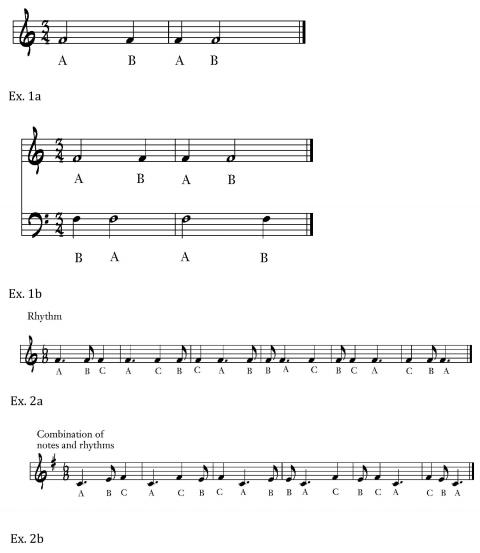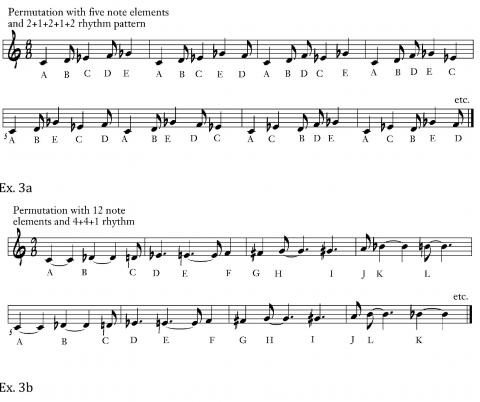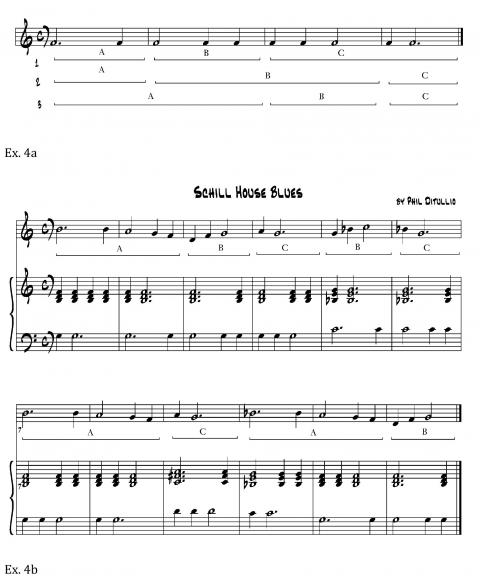The Power of Permutation
The name Joseph Schillinger may strike a chord with some, but Schillinger’s contributions to music have eluded most students and musicians. The Ukrainian-born theorist lived from 1895 to 1943 and taught professional musicians the system of musical composition he devised. In turn they composed music that is familiar to millions. George Gershwin’s Porgy and Bess and Glenn Miller’s “Moonlight Serenade” were written with the Schillinger System. Film composers Leith Stevens and John Barry both studied the Schillinger System. Music written by Vic Mizzy for the TV shows The Addams Family and Green Acres and for the film The Ghost and Mr. Chicken was written with the system. B.B. King, John Cage, and Quincy Jones used facets of the Schillinger technique. Avant-garde composer and performer Mikel Rouse composes multimedia rock operas that are based on the system, as are works by experimental pianist and composer Yaron Herman. Today, students of the system occupy all genres, from pop to classical to jazz to new age. Because Schillinger’s system is a musical theory based on mathematics, it can be applied to all styles of music past, present, and future.
The complete Schillinger System of Musical Composition was written as a four-year course that was taught in private lessons. During the 1940s, Schillinger-certified teachers spread throughout the country and developed more than 40 schools under his name. Berklee founder Lawrence Berk was trained by Schillinger and established Schillinger House in Boston. Later he renamed it Berklee College of Music. “[The Schillinger System] constitutes my formal musical education almost in its entirety,” attested the late Bill Leavitt, Berklee’s first Guitar Department chair.
Schillinger’s teachings continue to be useful, fresh, and exciting and can aid your music writing. The basic philosophy is that the system can help solve musical problems. In fact Berk’s initial course offerings were called Schillinger Problems and focused on solving compositional problems. Schillinger’s mathematical approach addressed many of the exceptions to the rules of traditional music theory.
In this introduction to the system, we’ll examine permutation, a simple technique that offers the musician infinite options. You can start to apply permutation techniques in your compositions without having to learn the entire Schillinger System. These techniques are the most important aspects of Schillinger’s system of composition in terms of generating material and overcoming writer’s block.
There are two types of permutations—general permutations and circular permutations—which are used to create variations in every aspect of musical composition. The general permutations procedure creates a large number of variations, while the circular permutations procedure creates a small number of variations.
General Permutation Procedure
Choose two elements from pitches, rhythms, or melodic phrases. To start, our elements will be two rhythmic values: a half-note and a quarter-note.
Assign the letters A and B to each element.
Permute (A+B) and (B+A)
This yields only two permutations. See examples 1a and 1b, where the permutations are shown on both a grand staff and a single staff.
Expanding the permutation to three elements (A+B+C) will yield six possible permutations.
A B C B A C
A C B B C A
C A B C B A
Example 2a illustrates this permutation with three rhythmic elements. Example 2b uses the three rhythms as well as three pitches.
Here is the list of all possible general permutations using two to 12 elements. The uses are numerous and quite powerful.
Two elements: Two permutations
Three elements: Six permutations
Four elements: 24 permutations
Five elements: 120 permutations
Six elements: 720 permutations
Seven elements: 5,040 permutations
Eight elements: 40,320 permutations
Nine elements: 362,880 permutations
Ten elements: 3,628,800 permutations
Eleven elements: 39,916,800 permutations
Twelve elements: 479,001,600 permutations
Example 3a illustrates permutations with five melody notes and a repetitive rhythm pattern. Example 3b shows permutations with 12 melody notes. General permutations can be useful for creating scales of two to 12 notes for use as practice exercises to develop instrumental technique.
Circular Permutation Procedure
The circular permutation approach can be used to expand a melodic idea.
Example 4a shows the rhythmic pattern for a four-bar melodic phrase and the three possible groupings of the bars within the phrase. To construct a phrase, write three melodic elements based on the rhythm pattern. As previously, assign a letter to each element (A,B,C). Permute the elements in clockwise direction: ABC BCA CAB. Example 4b is a blues tune written this way. For this piece, I chose bar grouping 3 and adjusted the accidentals to fit the blues progression beneath.
The same process can be used to permute in counterclockwise direction. The elements would then be grouped as follows: ACB CBA BAC.
Controlling the Possibilities
The strength of the Schillinger System rests on the foundation of permutations that offer infinite possibilities. The system changes the composing paradigm from “What do I write next?” to “What do I choose from the seemingly endless possibilities?” The sheer number of choices can easily overwhelm the composer. In order to solve this problem, Schillinger instructed his students to choose a limited number of techniques or permutations for each piece they wrote. He called this a “song manifold,” and it’s the guiding force to limit musical choices.
The examples provided here barely scratch the surface of the available techniques and applications that are possible. The Schillinger System is progressive, and each lesson builds on the prior one. This article provides only a glimpse into the system’s power. The Schillinger Society is the only entity that offers tutelage under certified Schillinger instructors. For information on the Schillinger method and workshops, visit www.schillingersociety.com.
Philip and Teresa DiTullio are music professionals, researchers, and the cofounders of the Schillinger Society.







